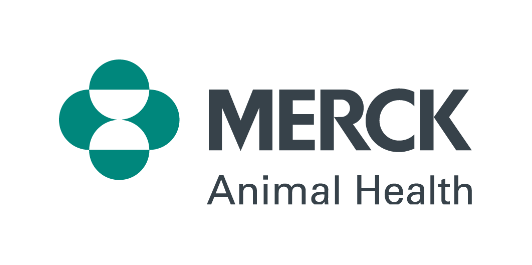
New Survey Shows Horse Owners Underestimate Disease Risks
Veterinarians share top tips to prevent show season setbacks
As the heart of the spring season unfolds, a concerning trend is emerging in the equine community. A recent survey of American Association of Equine Practitioners (AAEP) members reveals that many horse owners significantly underestimate infectious disease risks and implement only average or below-average biosecurity precautions.1
This presents significant challenges in managing disease outbreaks. Experts caution that as more horses gather, the risk of infection looms—recent outbreaks of equine herpesvirus myeloencephalopathy in the U.S. and Europe and regional outbreaks of equine herpesvirus-1 in the U.S. highlight the threat. Event facilities are particularly susceptible to infectious disease outbreaks, with a 60% risk compared to 47% in resident environments.
Veterinarians are urging a revision of current practices. “We’re entering the busiest time of the year for equine activity, and robust biosecurity plans are essential to prevent disruptions,” says Bryant Craig, DVM, Merck Animal Health. “For those traveling or managing busy farms, it’s vital that they vaccinate and follow good hygiene practices like disinfection and using personal buckets on the road.”
The survey builds on a 2023 survey of horse owners, where researchers sought to gain a better understanding of owners’ knowledge and awareness of biosecurity practices.2 While some preventive steps are being taken, there is a noticeable lack of proactive measures. For example, only 54.2% of facilities reported having an isolation plan for sick horses, and routine practices like temperature checks—a critical early detector of disease—are remarkably infrequent, with only 2.5% of owners implementing them. Meanwhile, over 90% of horse owners perceive the risk of disease from mingling at events to be only low-to-moderate.
Highlighting the challenges, Nathaniel A. White, DVM, MS, DACVS, director of the Equine Disease Communication Center, emphasizes that early recognition of illness is key. “The goal of biosecurity is to quickly identify the cause of an infectious disease and take steps to prevent its spread,” he says. “It is important to comply with a veterinarian’s recommendations for isolation and treatment, particularly when horses travel and have contact with new horses.”
Keep it simple
Even small changes in management and preparation can significantly impact horse health and safety. Implementing straightforward practices not only helps prevent disease spread but also ensures the continuity of equine events and plans. Equine veterinarians surveyed recommend focusing on these high-priority biosecurity measures:
- Isolate sick horses. Adequate distance between sick and healthy horses is critical to prevent disease spread. Identify a location where this is possible.
- Isolate new horses. Set up designated areas for new horse arrivals to monitor and mitigate risks.
- Monitor temperature. Daily temperature checks, particularly during travel, can help detect disease earlier.
- Initiate diagnostics when fever is detected. Many infectious respiratory diseases can present with similar clinical signs, so it is important to identify the root cause of the fever to allow for accurate treatment and effective disease management.
Dr. White and his team of researchers also highlight a need for greater understanding and awareness among the horse-owning community of the risks of horse mingling, event entry requirements such as vaccination and health certificates, and the creation of biosecurity plans for facilities and events where horses co-mingle.
Tools and tech make biosecurity easier
Temperature-sensing microchips, like Bio-Thermo®, offer dual benefits: reliable identification and efficient temperature monitoring with just a scan. This digital approach to routine temperature monitoring is faster, safer and less stressful for horses while reducing the need for handlers to directly contact sick animals.
Proper disease management begins with understanding what’s infecting horses. The Equine Respiratory Biosurveillance Program has tracked viral and bacterial respiratory pathogens across the U.S. for 17 years, providing crucial disease insights. In partnership with University of California, Davis, Equine Infectious Disease Research Laboratory, the program delivers rapid test results that enable prompt treatment decisions and curb further disease spread.
The Equine Disease Communication Center provides real-time disease alerts and information to help prevent and mitigate equine infectious diseases, including comprehensive biosecurity resources.
A collaborative approach
“The goal is to make biosecurity easier by taking small, incremental steps,” adds Dr. Craig. “We’re all in this together—a close partnership between veterinarians and horse owners will help ensure time in the saddle isn’t cut short by contagious disease.”
Horse owners are urged to talk to their veterinarian about customized biosecurity recommendations. Learn more about trending infectious disease threats and biosecurity through the Equine Respiratory Biosurveillance Program and the Equine Disease Communication Center.
[1] White, N, Flynn, K, Pelzel-McCluskey, A. Assessment of Biosecurity for Equine Infectious Diseases in Veterinary Practice. AAEP Proceedings, vol. 70, 2024, pp. 343.
[2] White, N, Pelzel-McCluskey, A. Cross-Sectional Survey of Horse Owners to Assess Their Knowledge and Use of Biosecurity Practices for Equine Infectious Diseases in the United States. Animals 2023, 13, 3550. https://doi.org/10.3390/ani13223550
